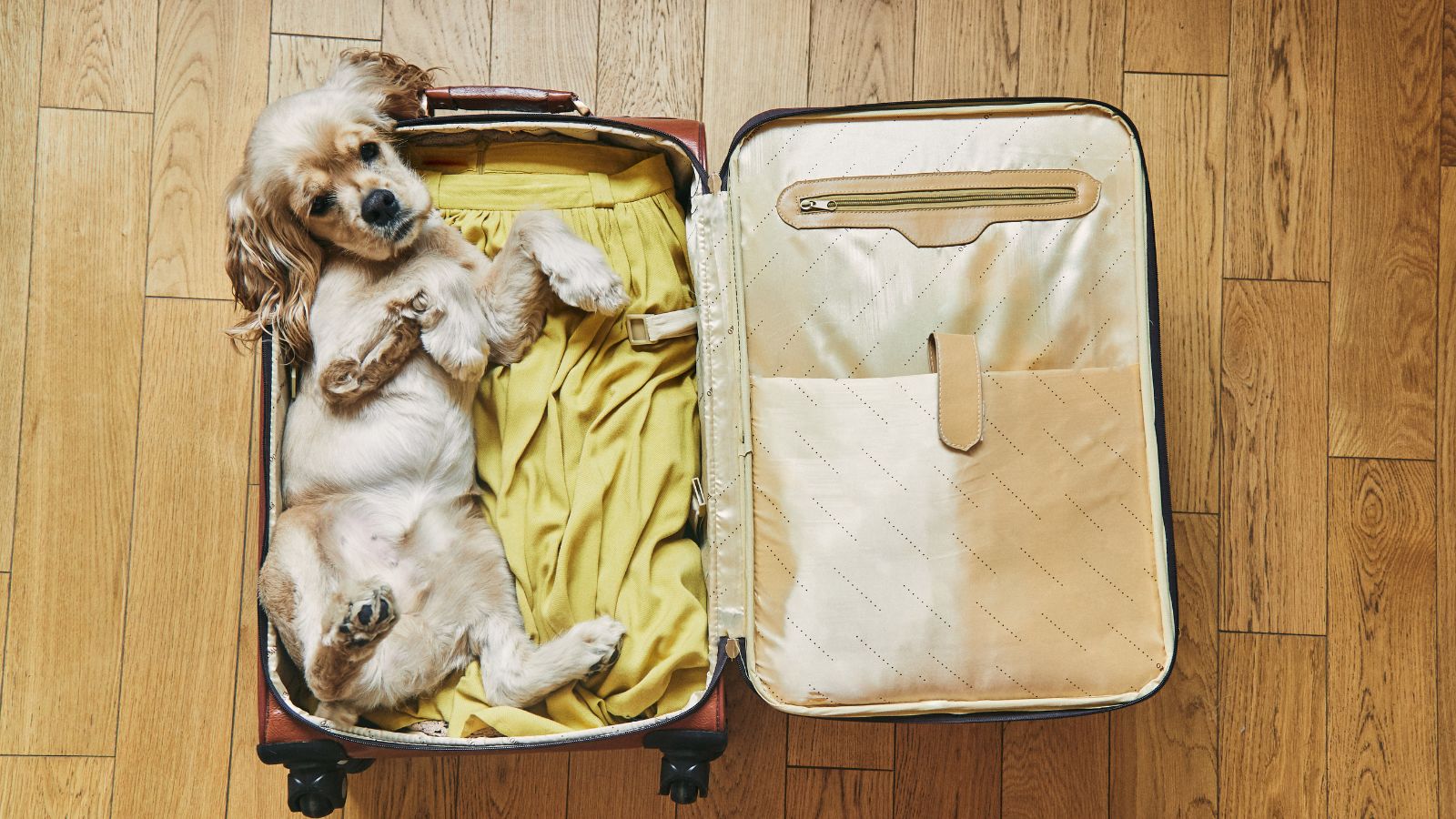Many people look forward to taking their dogs on vacation with them, seeing the sights along the way, exploring new places together, and imagining a journey that is both cozy and comfortable. However, in reality, if you are unprepared, you will often encounter various emergencies during the trip: forgetting to bring proof of vaccination, not being able to find a real accommodation that accepts pets, or even the dog getting carsick in the car, getting agitated, or defecating anywhere, all of which can make the whole trip a mess.
In fact, as long as you plan ahead and make the necessary preparations, traveling with your dog is not as complicated as you think. Mastering some practical travel points will not only make your dog feel more at ease, but also allow the owner to enjoy a relaxing and smooth journey.
Confirm Dog -Free Areas
There are many places that seem to welcome pets on the surface, but in practice there are a lot of hidden restrictions. If you do not know clearly in advance, you may be turned away at the site, which not only spoils the fun, but also disrupts the originally scheduled trip. To avoid this situation, it is recommended to focus on confirming whether the following five types of venues actually allow dogs before departure:
- Popular attractions: Pets are prohibited in some nature reserves, parks or religious sites; even if they are allowed, they may be required to be kept on a leash, muzzled, or show proof of a valid vaccination.
- Public transportation: such as airplanes, high-speed railways and long-distance buses, most of them do not allow pets to travel with them, and they can only go through the check-in procedure, which is a cumbersome and risky process.
- Accommodation: Even if the booking platform is labeled “pet-friendly”, you should confirm directly with the landlord whether the type, size and number of pets meet the reception standards.
- Downtown streets and commercial spaces: Some cities have restrictions on large dogs, and some pedestrian areas or shopping malls explicitly prohibit pets, which may result in fines.
- Dining spaces: Most restaurants and cafes prohibit dogs from entering indoor areas, especially in urban cores where restrictions on pets are relatively strict.
Pre-Travel Health Check
Dogs tend to be sensitive to changes in the environment and may experience stress reactions such as agitation, vomiting, or even loss of appetite if they do not adapt well while traveling. In order for it to travel with peace of mind, owners must do a basic health check before departure.
The most important point is to confirm that vaccinations are complete, and carry a vaccination book or electronic proof with you in case of possible checking in scenic spots, accommodation or during transportation.
It is also important to confirm that deworming treatments have been completed recently, especially when traveling to natural environments such as meadows, forested areas or mountainous regions to prevent flea and tick bites.
Secondly, it is recommended to prepare some stress relief products according to the dog’s personality, such as calming spray, soothing collar or mild sedatives recommended by the veterinarian. In addition, you should also confirm whether the dog has a chip implanted and test whether the information can be read normally. If it has not been implanted, you can also consider doing it before the trip, which will help prevent the dog from getting lost and quickly found. You can also support your dog’s overall health and wellbeing with supplements that focus on dental health, such as those from Pup Labs, which can help maintain oral hygiene during travel and prevent stress-related issues.

In order to cope with any emergencies that may occur during the trip, it is recommended to carry along your dog’s regular medications that you normally use and prepare a brief health record, including information on past medical history or allergic reactions. At the same time, check the address and contact information of pet hospitals near your destination in advance, just in case.
If you plan to travel across provinces, some regions may require a pet medical record in advance, so it is advisable to know the relevant regulations beforehand. Although these preparations are a bit tedious, they can greatly reduce the risk of accidents and make the whole journey more secure and smooth.
Airline Shipping Vs. Self-Driving Vs. Chartering A Car
When taking your dog out, the mode of transportation is a key decision. Different modes vary greatly in terms of comfort, safety, and difficulty for your dog. Below is a comparison of three common modes of transportation.
| Travel | Dog Experience | risk | Recommended group |
| Aircraft consignment | The most stressful and possibly frightening | Extreme weather, shipping delays, and operational errors may cause injury or even death. | As a backup when long distances cannot be replaced |
| Self-driving | Dogs are most familiar and have a strong sense of security | Dogs get carsick, and frequent rest affects progress | The first choice for short and medium distances, suitable for most dogs |
| Charter | Similar to self-driving, but with a driver | The price is high, you need to confirm whether the driver accepts pets | Consider this option if you don’t know how to drive or are traveling with a group of people. |
Note:
- Aircraft consignment: Some airlines have poor pet transportation conditions, and there are many user complaints. Low-cost airlines do not provide standard aviation boxes or have poor storage temperature control. It is recommended to avoid airlines that do not have a pet transportation line and 24-hour customer service. Airlines that provide cabin pet policies can be given priority.
- Self-driving: Many drivers do not know that some highway service areas have a clear ban on pets getting off the car, especially large dogs. Once discovered by cameras or on-duty personnel, they may be recorded as violating the rules, and serious cases may even affect annual inspections or credit points .
- Charter: Some drivers require pets to be in an airline box or travel cage and not to touch the ground during the entire trip. This needs to be discussed in advance. If the dog is large, you can ask if a waterproof sheet can be laid on the back seat.
Accommodation That Accepts Pets
Many accommodation platforms on the market are marked as “pet-friendly”, but in fact there are many restrictions on dogs. Some only accept small dogs, some require additional fees, and some allow check-in but refuse to allow pets indoors. Therefore, you should pay special attention before booking:
- Communicate directly with the landlord: Don’t just look at the platform label, be sure to confirm with the landlord via phone or message whether he or she accepts dogs, and specify the size, number, whether the dog sheds, etc.
- Confirm the activity space: It is preferred to choose a B&B with a separate courtyard, balcony or surrounding open space, so that the dog can move more freely and the barking will not easily disturb the neighbors.
- Understand additional rules and deposits: Some B&Bs charge a “pet cleaning fee” or “behavior deposit”. Asking in advance can avoid disputes when checking in.
- Check review keywords: Search for keywords such as “pet”, “dog”, “quiet” in the reviews to see the actual stay experiences of other pet owners.
Tips For Your Trip
There are many uncertainties when traveling, especially when traveling with a dog, which requires the ability to respond on the spot and advance preparation.
Scenic Spot Alternatives
Even if some popular scenic spots are marked as “pets are allowed in some areas”, they often temporarily restrict dogs from entering due to crowd density, safety regulations, etc. In this case, don’t rush to give up the trip, you can try the following ways to negotiate a solution:
- Communicate with the scenic area staff whether you are allowed to stay in the outer area. Although some parks do not open the main attractions, they allow walking around parking lots and tree-lined paths.
- Visit in batches: one person stays behind to look after the dog, while the other person goes in to visit. Taking turns will not affect the tour and will also ensure the safety of the dog.
- Look for pet-friendly routes nearby: such as hiking trails, parent-child farms, camping sites, etc., which are usually more relaxed in management and more suitable for activities with pets.
If you plan to temporarily let your dog roam freely around a scenic area, please be sure to use GPS positioning devices such as wireless dog fences, set up a safe area and turn on the alarm function to prevent the dog from getting lost or accidentally entering a restricted area.
Don’t Panic In Bad Weather
When encountering sudden weather changes (such as heavy rain, extreme heat or cooling), the most important thing is to ensure your dog’s physical and emotional stability:
- Carry a portable raincoat, towel, and non-slip foot covers with you to quickly protect your dog.
- When the weather is hot, prepare ice pads or cold water wipes to prevent your dog from getting heatstroke, and try to go out in the morning or evening.
- If the trip is cancelled or postponed, give priority to arranging the dog to rest indoors in a quiet environment.
It is recommended to pay attention to the 72-hour weather forecast of the destination before traveling. It is much better to adjust the plan temporarily than to travel in a hurry.
Dog Social Crisis Management
Dogs are easily excited and more sensitive in unfamiliar environments, and may show aggressive, barking or escaping behaviors towards other dogs or strangers. Preventive measures include:
- Avoid direct eye contact with other dogs and approach them in a straight line to reduce their alertness
- If your dog is sensitive, you can wear a “keep your distance” identification belt to remind others
- Prepare snacks or toys to distract your dog and intervene before he loses control of his emotions
- Do not punish the dog afterwards, but help the dog regain a sense of security by comforting it and staying away from the source of stress.
If a conflict occurs, be sure to handle it calmly, control your dog, and actively communicate with the other party to resolve misunderstandings and avoid unnecessary disputes or complaints.
Summarize
Traveling with a dog may seem easy, but it actually requires adequate preparation and flexibility. Being prepared is to reduce trouble, but there is no need to be overly anxious. As long as you are careful and patient enough, the dog will slowly adapt to everything on the trip under your guidance. Remember, what is more important than perfection is your courage to travel with it and the joy of companionship.


 By
By 




